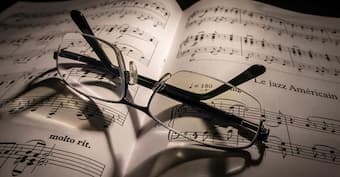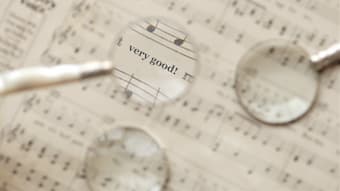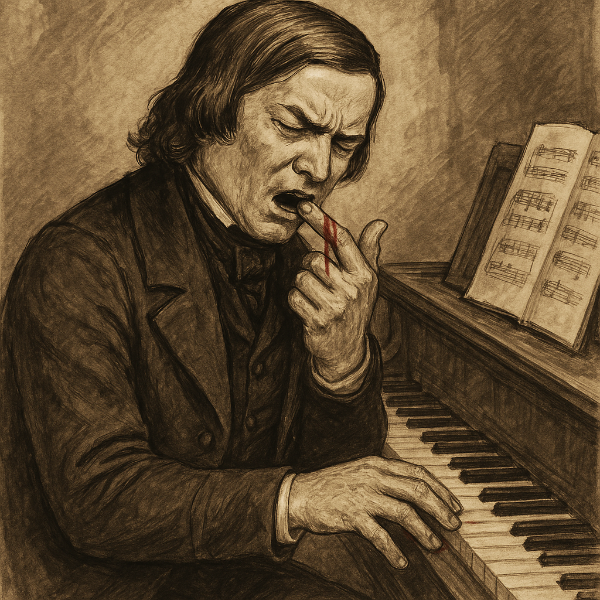
© STasker/The Image Bank/Getty Images
The pressure of sight reading can seem a lot like a bad date: unpleasant surprises, sweaty palms and awkward silences can be just as common across the dinner table as when fumbling through an unfamiliar piece of music.
Thankfully, although the skill of sight reading can seem mysterious and mind-boggling, it doesn’t have to end in tears.
You might ask: How do some musicians manage to seemingly sit down and play anything you throw at them? Is there a difference between playing music that’s been practiced versus sight read? And, more importantly, why is it important to keep practicing if I can just sit down and sight read instead?
Of course, every musician’s experience will be different, but for me, there is a big difference between practicing and sight reading. They exist as two separate entities – but if used well, they can each help reinforce and improve the other.
Bach: Prelude in C Major
Bach’s famous C Major Prelude is built up largely of arpeggios, so for someone well-versed in their scales and arpeggios, this piece would be relatively straightforward to sight read
Practicing and Sight Reading: Two Separate Entities
Good practice involves conscious, mindful repetition in order to progress. When we practice, we’re not just learning how to play one piece in isolation; through learning pieces, studies, and scales, we’re improving our overall technique on our instruments. The more we practice and learn, the more easily certain things come to us on our instruments – and this is where practice feeds into sight reading.
For a total beginner, who may only be able to play three notes on their instrument, every note requires a conscious effort to produce. Thoughts such as “Where do I put my fingers?” “How do I hold the bow?” “What do I do with my embouchure?” are totally normal at this stage. As they practice, they may eventually see a middle C and know just what to do, without the previous amount of effort. You could say, they ‘sight read’ that middle C.
After a few more lessons, a few more notes might come naturally to them, and from there, all sight reading is simply a gradual extension of these powers of recognition. Eventually, along with the notes, rhythms start to become familiar. Learning to sight read is just learning to anticipate evermore complex combinations of simple notes and rhythms, cultivating a familiarity and intimacy with your instrument that helps you to anticipate what’s coming next.
Sight Reading: A Learning Process
Really, the key word here is learning. It doesn’t just happen. Sure, some of us find it easier than others. But there is a knack to it, and it starts with hard work. Sight reading becomes easier the more someone has practiced, as it is their solid technique that enables them to process more complex things at a faster speed.
Arvo Pärt: Spiegel im Spiegel
Despite the simplicity of the notes in Arvo Pärt’s Spiegel Im Spiegel, it still requires intense practice to achieve the concentrated, meditative mood that characterises the piece. A good example of when just sight reading the notes (although simple) isn’t enough
It’s like a building: if the foundations are solid, then it stands a better chance of surviving a blizzard or deluge. If you’re not confident with your technique, then that shakiness only gets magnified when you’re confronted with unfamiliar material.
When children learn to read, they don’t just jump in with the complete works of Shakespeare. They learn the alphabet, then small words, and increase it up from there. Of course, music is a combination of learning to read plus a technical skill, all in real time, but the same principle applies: don’t crack out the sonnets before you have your ABCs down.
Why Is It Important to Keep Practicing if I Can Sight Read Instead?
 Sight reading certainly has its place, but don’t use it as a substitute for practice. Never (as I learned the hard way) sight read something in a lesson with your teacher and think you can get away with it. They can always tell. Trust me.
Sight reading certainly has its place, but don’t use it as a substitute for practice. Never (as I learned the hard way) sight read something in a lesson with your teacher and think you can get away with it. They can always tell. Trust me.
Besides, the brain space you’re using up to sight read would be better spent trying to implement what the teacher is suggesting, whether it be about phrasing, articulation, dynamics, or whatever. Those are the things that will, in the long term, help to improve your sight reading. By sight reading something too early on, you delay the process of absorbing the information that will eventually help you to be able to… sight read.
It takes a long time to get to a point where there is a sufficient technique to sit on in order to sight read something with perfect rhythm, correct articulation, and convincing phrasing. Even some professionals still get it wrong sometimes.
If you practice when you’re supposed to, you’ll probably start to find your sight reading increasing by itself, even if just a little bit. There are specific things you can do to improve your sight reading (and we’ll get into those later), and it won’t magically improve just because you’re practicing – it is something that needs to be practiced in its own right – but one of the most important things to remember about sight reading is that it’s built up from a deep familiarity with your instrument. And just remember: as scary as sight reading might seem, at least it’s not a bad date.
For more of the best in classical music, sign up to our E-Newsletter






